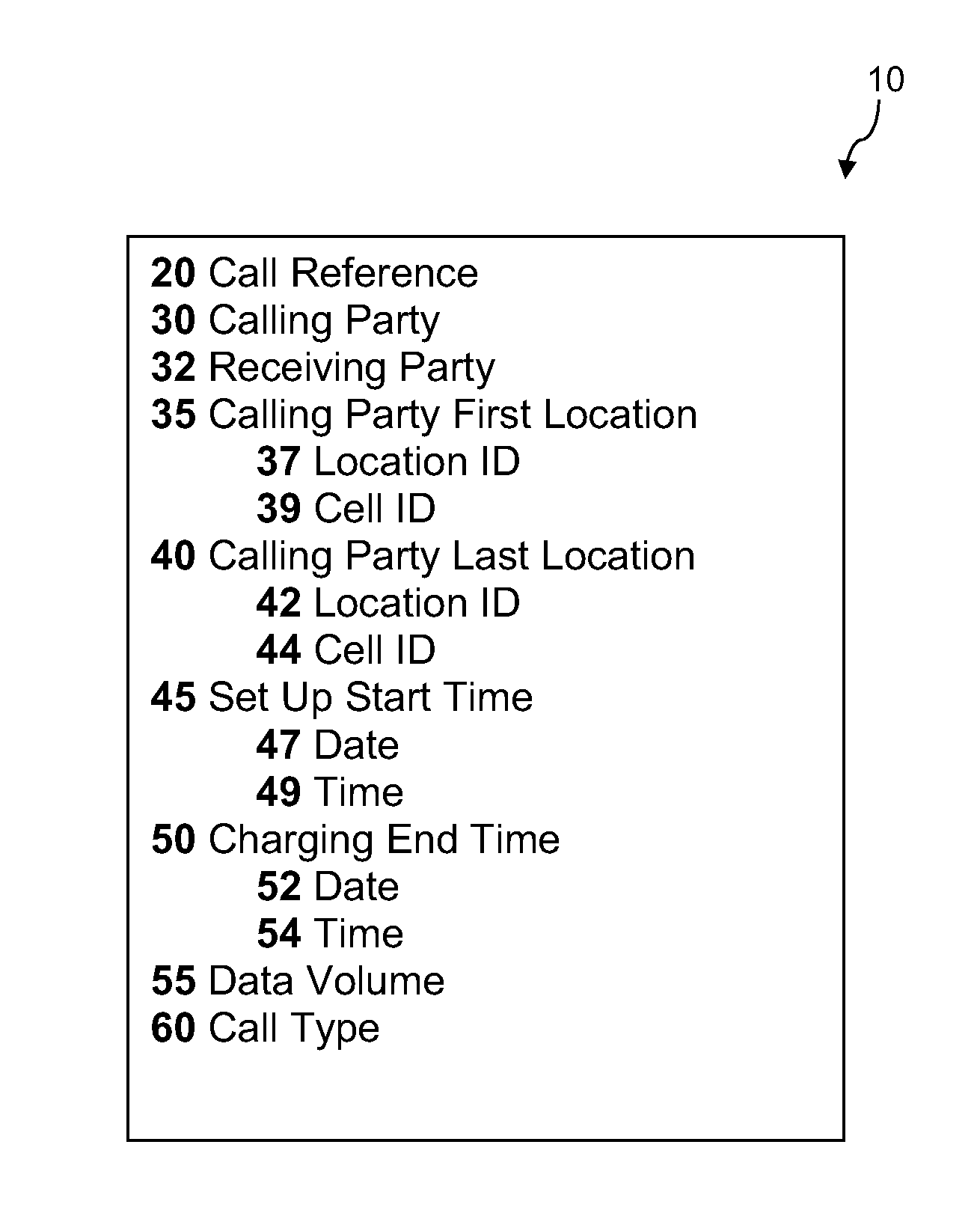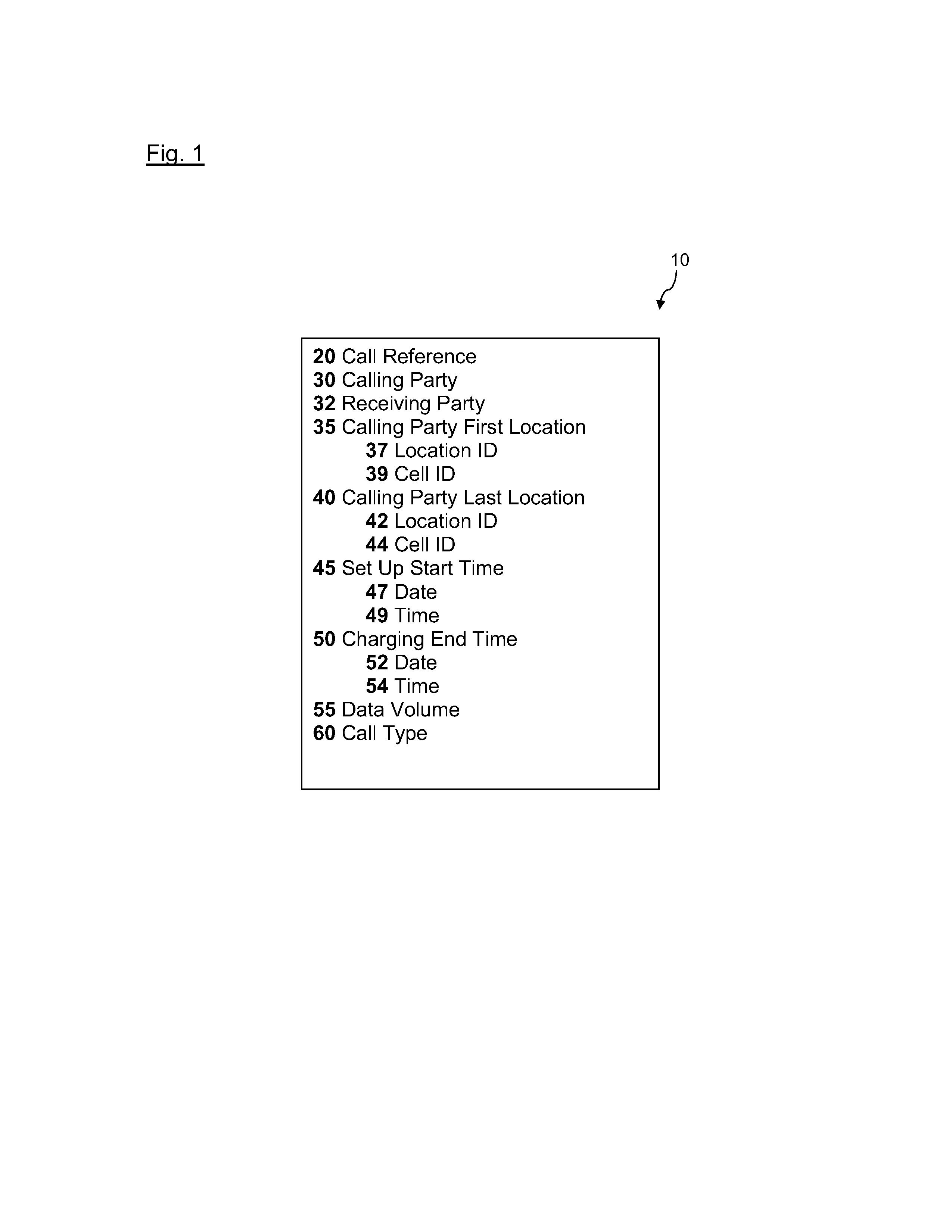Methods of analysing a cellular network
a cellular network and data analysis technology, applied in the direction of network traffic/resource management, electrical equipment, location information based services, etc., can solve the problems of poor prediction measurement accuracy, poor accuracy of home location, and inability to accurately estimate the attendance of the event, etc., to achieve accurate terminal carrier profile attributes
- Summary
- Abstract
- Description
- Claims
- Application Information
AI Technical Summary
Benefits of technology
Problems solved by technology
Method used
Image
Examples
Embodiment Construction
[0042]FIG. 1 shows an exemplary file structure of network usage records (NUR) 10 indicating some of the data fields that may be present in such a record. Other data fields may be present or the data fields may have different names or structure. NUR may be records that describe how a network element such as a switch, for example, handles an event (such as a call). The NUR data may include information about where the call was initiated and terminated, its duration, and the parties (or telephone numbers) involved in the particular event. Amongst other things, the NUR may contain information necessary to enable a user to be correctly billed.
[0043]In the present embodiment, the call reference 20 provides an identifier for the NUR. The calling party 30 is an identifier for the mobile device and may be the device's or SIM's telephone number, for example. The receiving party field 32 indicates the destination of the call. The calling party first location 35 contains two subfields 37 and 39 ...
PUM
 Login to View More
Login to View More Abstract
Description
Claims
Application Information
 Login to View More
Login to View More - R&D
- Intellectual Property
- Life Sciences
- Materials
- Tech Scout
- Unparalleled Data Quality
- Higher Quality Content
- 60% Fewer Hallucinations
Browse by: Latest US Patents, China's latest patents, Technical Efficacy Thesaurus, Application Domain, Technology Topic, Popular Technical Reports.
© 2025 PatSnap. All rights reserved.Legal|Privacy policy|Modern Slavery Act Transparency Statement|Sitemap|About US| Contact US: help@patsnap.com



